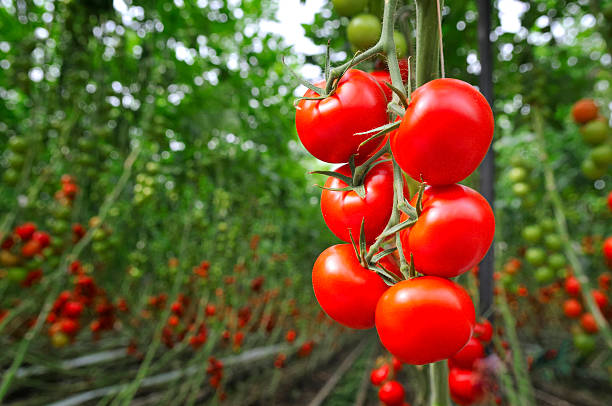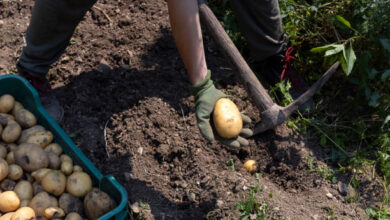When to Plant Tomatoes in Georgia: Everything You Need To Know

When to Plant Tomatoes in Georgia: Everything You Need To Know
Tomatoes are a favorite among home gardeners, prized for their juicy fruits and versatility in the kitchen. If you’re planning to grow tomatoes in Georgia, timing is crucial to ensure a successful harvest. In this guide, we’ll explore the best time to plant tomatoes in Georgia, share essential planting tips, and answer frequently asked questions to help you achieve a bountiful crop.
Benefits of Planting Tomatoes in Georgia
Nutritional Value
Tomatoes are rich in vitamins C and K, potassium, and antioxidants like lycopene. Growing your own tomatoes ensures you have a fresh and nutritious supply right in your backyard.
- Fresh Taste
Homegrown tomatoes offer superior flavor compared to store-bought varieties. Picking tomatoes at their peak ripeness guarantees maximum sweetness and juiciness.
- Cost Savings
Growing your own tomatoes can save you money. With a small investment in seeds and gardening supplies, you can enjoy a plentiful harvest throughout the growing season.
Best Time to Plant Tomatoes in Georgia
Timing is crucial when planting tomatoes to ensure healthy growth and a bountiful harvest. In Georgia, the climate varies significantly from north to south, influencing the optimal planting time. Here, we’ll break down the best planting times for different regions within the state, focusing on key factors such as frost dates and soil temperature.
Understanding Frost Dates
Frost dates are a critical factor in determining when to plant tomatoes. Tomatoes are sensitive to frost, and planting them too early can result in damaged or killed plants.
- Northern Georgia: In the northern part of the state, the last frost date typically falls between mid-April and late April. Given the cooler climate, it’s essential to wait until after the last frost to plant tomatoes. This ensures that young plants are not exposed to freezing temperatures that can stunt growth or cause significant damage.
- Central Georgia: For central Georgia, the last frost date is generally around early to mid-April. This region experiences a milder climate compared to the north, allowing for slightly earlier planting. However, gardeners should still monitor local weather forecasts to avoid unexpected frosts.
- Southern Georgia: Southern Georgia enjoys the mildest winters, with the last frost date usually occurring in late March to early April. The warmer climate in this region provides a longer growing season, enabling gardeners to plant tomatoes earlier than in the northern and central parts of the state.
Optimal Soil Temperature
In addition to frost dates, soil temperature plays a significant role in the successful planting of tomatoes. Tomatoes prefer warm soil, which promotes healthy root development and vigorous growth.
- Ideal Soil Temperature: The optimal soil temperature for planting tomatoes is between 60°F and 70°F. Planting in soil that is too cold can hinder germination and slow down plant development. Use a soil thermometer to check the temperature at the planting depth (about 2-3 inches) to ensure it has warmed up sufficiently.
- Monitoring Soil Temperature: Early spring can bring fluctuating temperatures. Even if the last frost date has passed, soil temperature may still be too cold for planting. Consistently warm soil temperatures are a more reliable indicator for the best planting time.
Starting Seeds Indoors
To maximize the growing season, many Georgia gardeners start tomato seeds indoors before the last frost date. This method allows for a head start on the growing season, leading to earlier harvests.
- Timing for Indoor Seed Starting: Start tomato seeds indoors about 6-8 weeks before the last expected frost date. For northern Georgia, this means starting seeds in late February to early March. In central Georgia, seeds should be started in mid to late February, and in southern Georgia, seeds can be started in early February.
- Transplanting Seedlings: Once the danger of frost has passed and soil temperatures are warm enough, transplant the seedlings outdoors. Harden off the seedlings by gradually exposing them to outdoor conditions over a week or two. Start by placing them in a shaded area for a few hours each day, gradually increasing their exposure to sunlight and outdoor temperatures. This process helps prevent transplant shock and prepares the plants for the garden.
Local Climate Considerations
Georgia’s diverse climate means that microclimates within your garden can also influence planting times.
- Urban Heat Islands: Urban areas with lots of concrete and buildings may warm up faster than rural areas, potentially allowing for earlier planting.
- Elevation and Slope: Gardens on south-facing slopes may experience warmer conditions and can be planted earlier than those on north-facing slopes.
Planting Tips for Tomatoes in Georgia
Choosing the Right Variety
Select tomato varieties that are well-suited to Georgia’s climate. Some popular choices include Better Boy, Celebrity, and Cherokee Purple. Heirloom varieties are also a great option for unique flavors and colors.
Soil Preparation
Tomatoes prefer well-drained, nutrient-rich soil. Prepare your garden bed by adding compost or well-rotted manure to improve soil fertility. Aim for a soil pH between 6.0 and 6.8.
Planting Depth and Spacing
When planting tomato seedlings, bury them deeper than they were in their pots, covering about two-thirds of the stem. This encourages strong root development. Space plants 18-24 inches apart to ensure adequate airflow and reduce the risk of disease.
Watering and Mulching
Consistent watering is crucial for healthy tomato plants. Water deeply and regularly, keeping the soil evenly moist but not waterlogged. Mulching around the base of the plants helps retain soil moisture and suppress weeds.
Frequently Asked Questions
- When is the best time to plant tomatoes in Georgia?
The best time to plant tomatoes in Georgia is after the last frost date, which varies by region: mid to late April in northern Georgia, early to mid-April in central Georgia, and late March to early April in southern Georgia.
- Can I start tomato seeds indoors in Georgia?
Yes, starting tomato seeds indoors 6-8 weeks before the last frost date is recommended. This means starting seeds in January or February for most of Georgia. Transplant seedlings outdoors once the danger of frost has passed.
- What are some good tomato varieties for Georgia?
Popular tomato varieties for Georgia include Better Boy, Celebrity, and Cherokee Purple. These varieties are well-suited to the state’s climate and offer excellent flavor and yield.
- How often should I water my tomato plants?
Water tomato plants deeply and consistently, aiming to keep the soil evenly moist. Avoid overwatering, as this can lead to root rot and other issues. Mulching helps retain soil moisture and reduce the frequency of watering.
- What should I do if there’s a late frost?
If a late frost is predicted, cover your tomato plants with frost blankets, sheets, or plastic to protect them. Remove the coverings during the day to allow sunlight and air circulation.
Conclusion
Planting tomatoes in Georgia can be a rewarding experience with the right timing and care. By understanding the best planting times, preparing your soil, and choosing suitable varieties, you can enjoy a bountiful harvest of delicious, homegrown tomatoes. Remember to monitor the weather and protect your plants from late frosts. Happy gardening!




